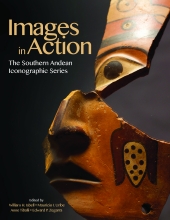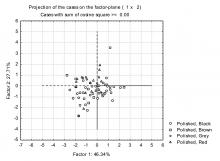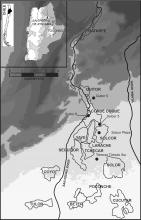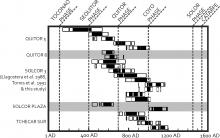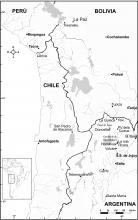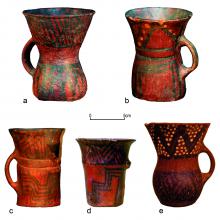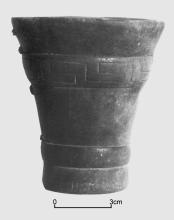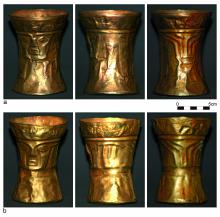Visual database
PCA graph of factors 1 and 2 for values of Bam Fe, Zr, and MN (log[10]) without outliers, all polished categories.
Cluster analysis, log(10) data, single linkage, squared Euclidean distance.
Location of the San Pedro de Atacama oases, indicating ayllu boundaries and sites included in this study.
Calibrated AMS 14C dates for the five sites included in this study. Black rectangles represent the 1-sigma (67 percent) confidence range of the calibrated date and the white rectangles represent the 2-sigma (95 percent) confidence range.
Map of the south-central Andes showing locations of the Quebrada de Humahuaca, Puna de Jujuy, and archaeological sites discussed in the text.
Vessels in the Isla style. (a) La Isla A, tomb 18, ME 2647; (b) Tricolor with white dots, Pueblo Viejo de La Cueva, ME 31-297; (c) ME 73-874, without provenience; (d) Tchecar Sur-695; (e) Tricolor with white dots, Quitor 6 2569-2573, San Pedro de Atacama.
Kero of wood carved in Tiwanaku style, Quitor 5, Tomb 2241, San Pedro de Atacama.
The kero symbol held by a Personage with staffs carved on the Stone Receptacle from Offerings No. 1 found in the Semi-subterranean Temple at Tiwanaku. Note the kero image, seemingly turned sideways, in the staff held in the left hand, just above the thumb.
Effigy vessels of gold from Doncellas. (a) kero I; (b) kero II with constricted waist. INAPL Number 2613.
Effigy vessel of gold from Pueblo Viejo de La Cueva: front, profile, and three-quarters views. A. Linares collection.
